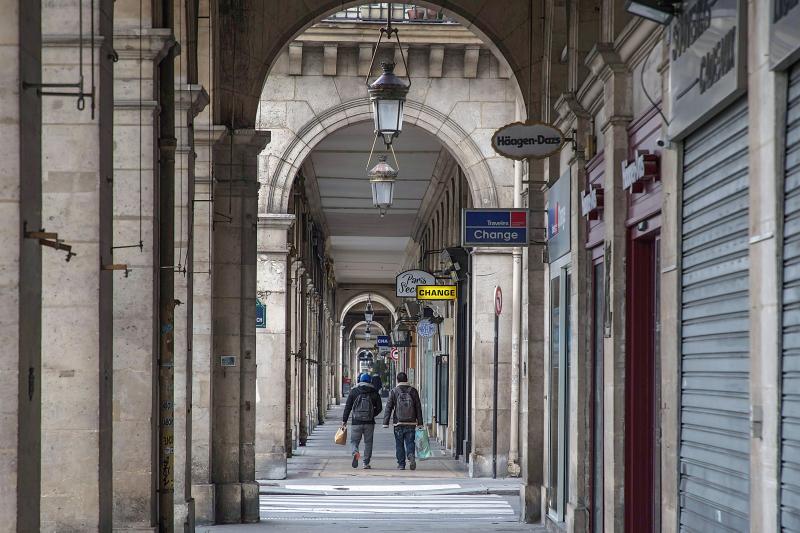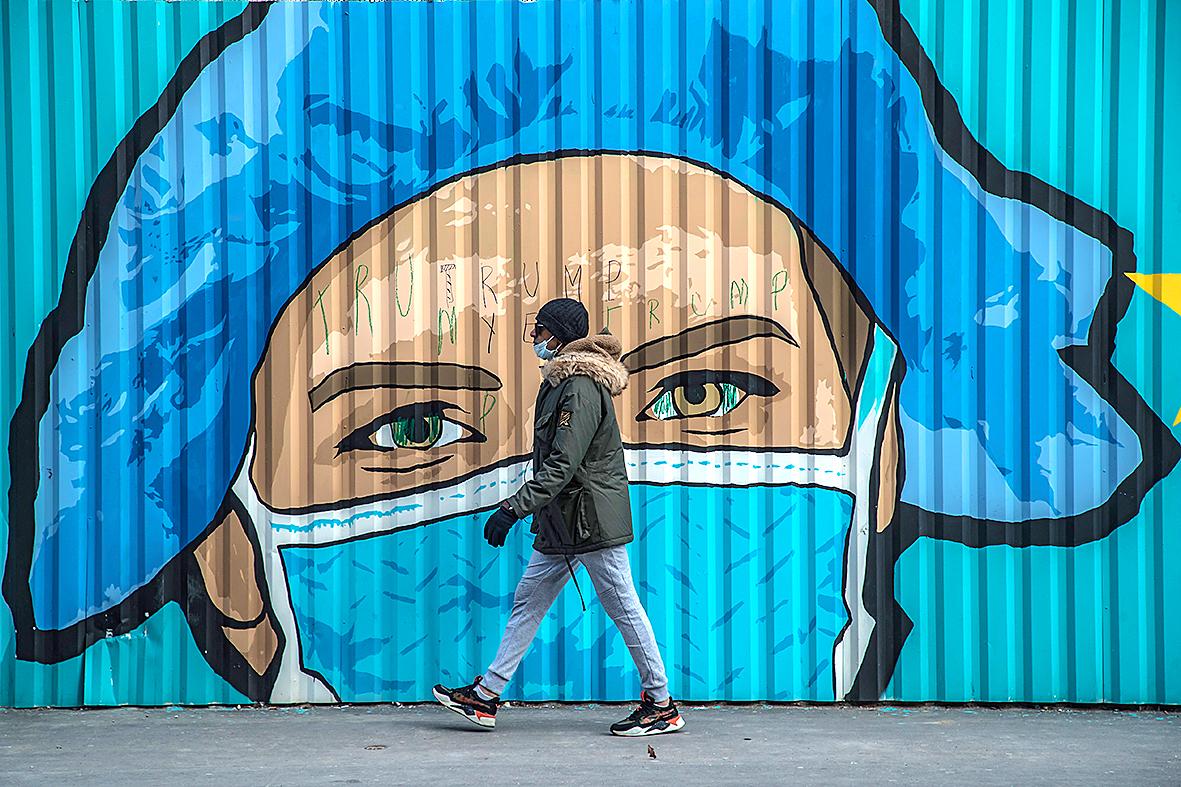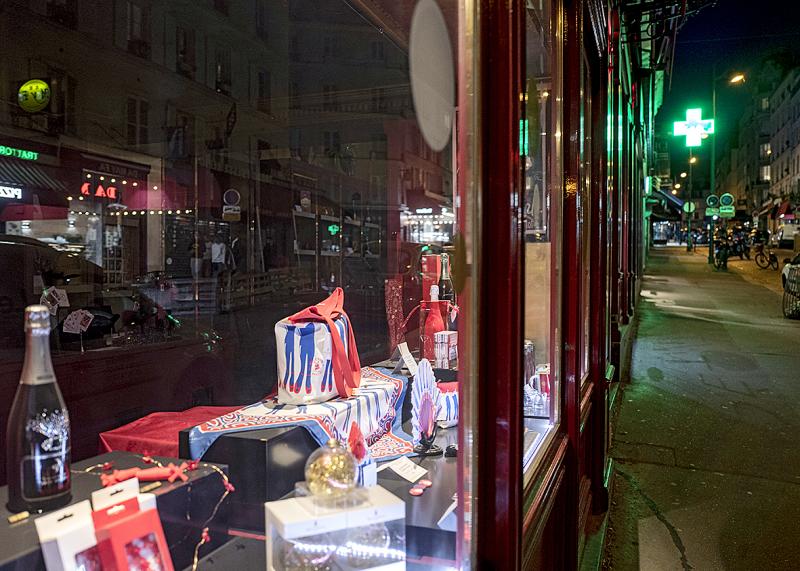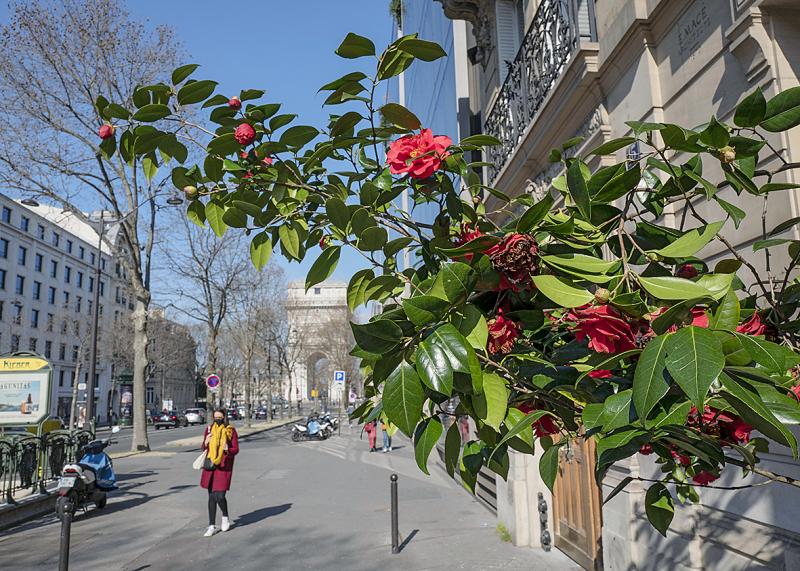Charles Baudelaire, whose 200th birthday yesterday was celebrated with stamp issues, new editions of his poetry and virtual events, is arguably more famous for his concept of the flaneur — an aimless stroller or ambler — than for his writing. That’s partly because reading his volumes Les Fleurs du Mal or Le Spleen de Paris requires a degree of application, but also because the idea of an individual moving through the city streets and finding aesthetic pleasure in the teeming crowds, appeals to us and continues to chime. At least, it did until spring last year, when the crowds were told to stay at home.
But even in a ghost city, it’s possible to think and walk like a flaneur. Rainer Hanshe has translated several of Baudelaire’s books into English — including Belgium Stripped Bare, about the French author’s visit to Brussels just before it was struck by a cholera epidemic.
He notes: “The flaneur is a figure who, while immersed in the urban throng, is simultaneously separate from it. If more empty than not, our streets are still to some degree populated, and we can engage in the form of communion that Baudelaire referred to as a mysterious intoxication.”

Photo: EPA-EFE
This involves trying to get inside the heads of others — an act of ecstatic empathy that “peoples” the solitary walker’s imagination. It’s a radical idea that envisions the mind as a sponge or, perhaps, a social media channel. Baudelaire’s most memorable phrase for the flaneur was “a kaleidoscope gifted with consciousness.”
Some of his ideas need updating. The flaneur might be “a prince enjoying his incognito wherever he goes,” but what about the princesses? Janet Wolff of the University of Manchester has written of the “invisible flaneuse,” of “respectable” women’s absence from public arenas in modern cities. In her 2016 book Flaneuse: Women Walk the City, Lauren Elkin calls for women to take to the streets, following the example of radically reflective female walkers from Virginia Woolf and Jean Rhys to Rebecca Solnit.
The German philosopher Walter Benjamin expanded Baudelaire’s ideas about the flaneur, adding to the myth of Paris as the archetypal modern metropolis. Some of TS Eliot’s poetic evocations of London sprang from his readings of Baudelaire.

Photo: EPA-EFE
But one can roam and ruminate equally in Cardiff, Dundee, Liverpool or Belfast. As urban consumer culture spreads, in the shape of delivery vans, Deliveroo bikes, “artisan” coffee shops and the like, you can arguably be a flaneur (there’s also a verb, flaner, to stroll) in towns, villages and countryside.
But to do so requires discipline. Here are 10 Baudelairean suggestions for exploring the ghost city.
READ THE CITY

Photo: AP
In his poem Le Soleil, Baudelaire writes of “Stumbling on words as on cobblestones.” To say we should treat the city as a text sounds pretentious, but not if we think about street names, tree species and the colors of the brickwork, and unearth forgotten plaques and historic sites. The plaque for Tyburn gallows at Marble Arch is close to a heavily trafficked spot, but few stop to study it. Even famous monuments can be looked at from new angles. Baudelaire wrote about marble statues as if they were sentient. What emotions do they stir in you? Who might have been here before you?
NO RUSH HOURS, SO NO HURRY
For some translators, “idler” is the best equivalent of flaneur. Ambling is best enjoyed slowly, daydreaming. “A dandy does nothing,” Baudelaire wrote. The pandemic-struck city, with its permanent Sunday-state, is ideal for leisurely meandering. Use it while it lasts.

Photo: AP
THE NIGHT WALK
Noctambulism is a magical pursuit, as we swap sleep and ordinary dreams (or those garish ones we’ve all been having during lockdowns) for the dreamscape of the city. Artificial light, the absence of others, prowling foxes and the mystery of shadows recast familiar places as strange and special. To see the everyday anew is the ultimate goal of flanerie.
TURN OFF GADGETS
If there’s one thing that kills the art of flanerie, it’s the smartphone; even worse are apps that count steps. Why look down when you can look up and about? If you want a soundtrack to walk to, visit the University of Birmingham’s Baudelaire Song Project and pick a slow-tempo chanson.
WINDOW SHOPPING
The grand iron-and-glass arcades of Paris inspired Walter Benjamin, who was fascinated by the well-stocked magasins, the “temples” of capitalism. Window-shopping has not been banned, and you can still read the signage, promises, buildings, fashions. We are witnessing the gradual abandoning of the arcades; Benjamin would have been spellbound. Even Liverpool One, opened in 2008, suddenly seems old and semi-redundant.
STOP FOR A SIT-DOWN
Cafes shut? Pubs shuttered? There are always benches and steps, parks and plazas, as well as doorways to loiter in. There’s no shame in sitting. In his dazzlingly erudite book, The Walker: On Finding and Losing Yourself in the Modern City, Matthew Beaumont makes a convincing argument that convalescence — the state between health and illness — is the perfect mode for discovery as it makes us raw and sensitive but also disconnected. If you’re recovering from coronavirus, you may actually be convalescing. As COVID-19 recedes, our cities are convalescing, too.
GET SURREAL — OR DRUNK
Philosopher Guy Debord, who described walking as a derive (drift), was influenced by the surrealists, who used chance and games to develop new ideas and perspectives. One of Debord’s friends walked through a region of Germany following a map of London. Why not walk around an empty Manchester using a cut-up map reassembled at random?
In his 1989 book Panegyric, Debord recounts wandering around Europe’s great cities trying different alcoholic drinks, including pints of mixed (half-mild, half-bitter) in England. How about a hip flask of absinthe in Aberdeen? In 1955, Debord developed the idea of psychogeography, which was later taken up by Iain Sinclair, Will Self and others.
REINVENT THE CITY
The Paris of Baudelaire and Benjamin is long gone. A flaneur today has to reckon with traffic, overtourism, selfies “in Sartre’s favorite cafe” and soulless spaces like La Defense. The emptying of our cities, and their reinvention post-pandemic has every chance of being an improvement on the hyperinflated housing, glass-and-steel phallocentricity, pseudo-public piazzas and rank consumerism of the late-20th-century metropolis. Perhaps we are ambling into a brighter future?
Stockton-on-Tees’ projected giant green space, which will replace high street shops and provide residents with a wonderful patch of rus in urbe when it opens in 2025, harks back to the Victorian era of city parks.
PICK THROUGH THE RUBBISH
Baudelaire writes of Paris’s chiffoniers or ragpickers, marginalized proto-recyclers of the city that ignores and shuns them. Benjamin developed this into the idea of poet-as-ragpicker. The ragpicking flaneur can construct his mental collage from the messy, chaotic, ugly, dirty discarded things found around the city. Dustbins and gutters can tell us more than museums.
Keyworkers — including refuse collectors — see more of the “real” city than most. UK cities have some of the most extensive and storied post-industrial landscapes in the world, and most are to be found far from honeypots and theme-park “historic centres”.
KEEP NOTES, MAKE SKETCHES
Baudelaire was not the first — or the last — wandering philosopher-writer. He took key ideas from Edgar Allan Poe, and authors as varied as Charles Dickens, Marcel Proust, George Sand (cross-dressing to penetrate male-dominated milieux), James Joyce, Jorge Luis Borges, Franz Hessel, Ralph Ellison and Edmund White have contributed to the tradition.
The flaneur appears in paintings by many artists, including Degas and Manet (while Edward Hopper painted like one), and can be seen ghosting through the work of film-makers such as Agnes Varda and Patrick Keiller. Much of the best travel writing benefits from a quizzing gaze, intellectual restlessness and a degree of distance — see Caryl Phillips’ The European Tribe.
The empty city is waiting to be filled with new words.

The Democratic Progressive Party (DPP), Chinese Nationalist Party (KMT), and the country’s other political groups dare not offend religious groups, says Chen Lih-ming (陳立民), founder of the Taiwan Anti-Religion Alliance (台灣反宗教者聯盟). “It’s the same in other democracies, of course, but because political struggles in Taiwan are extraordinarily fierce, you’ll see candidates visiting several temples each day ahead of elections. That adds impetus to religion here,” says the retired college lecturer. In Japan’s most recent election, the Liberal Democratic Party lost many votes because of its ties to the Unification Church (“the Moonies”). Chen contrasts the progress made by anti-religion movements in

Last week the State Department made several small changes to its Web information on Taiwan. First, it removed a statement saying that the US “does not support Taiwan independence.” The current statement now reads: “We oppose any unilateral changes to the status quo from either side. We expect cross-strait differences to be resolved by peaceful means, free from coercion, in a manner acceptable to the people on both sides of the Strait.” In 2022 the administration of Joe Biden also removed that verbiage, but after a month of pressure from the People’s Republic of China (PRC), reinstated it. The American

Chinese Nationalist Party (KMT) legislative caucus convener Fu Kun-chi (傅?萁) and some in the deep blue camp seem determined to ensure many of the recall campaigns against their lawmakers succeed. Widely known as the “King of Hualien,” Fu also appears to have become the king of the KMT. In theory, Legislative Speaker Han Kuo-yu (韓國瑜) outranks him, but Han is supposed to be even-handed in negotiations between party caucuses — the Democratic Progressive Party (DPP) says he is not — and Fu has been outright ignoring Han. Party Chairman Eric Chu (朱立倫) isn’t taking the lead on anything while Fu

Feb 24 to March 2 It’s said that the entire nation came to a standstill every time The Scholar Swordsman (雲州大儒俠) appeared on television. Children skipped school, farmers left the fields and workers went home to watch their hero Shih Yen-wen (史艷文) rid the world of evil in the 30-minute daily glove puppetry show. Even those who didn’t speak Hoklo (commonly known as Taiwanese) were hooked. Running from March 2, 1970 until the government banned it in 1974, the show made Shih a household name and breathed new life into the faltering traditional puppetry industry. It wasn’t the first